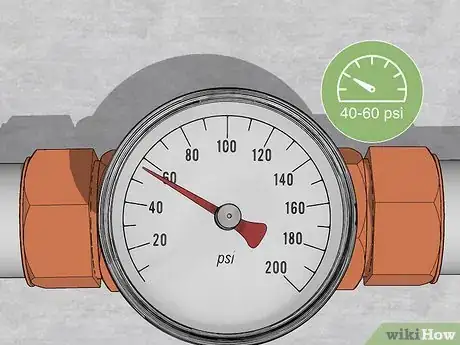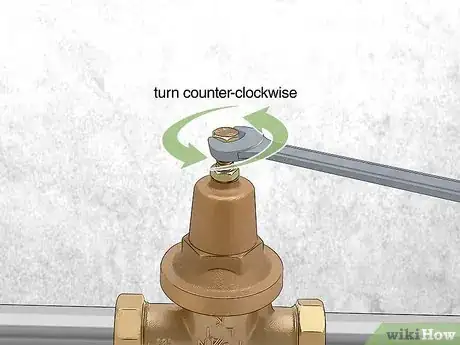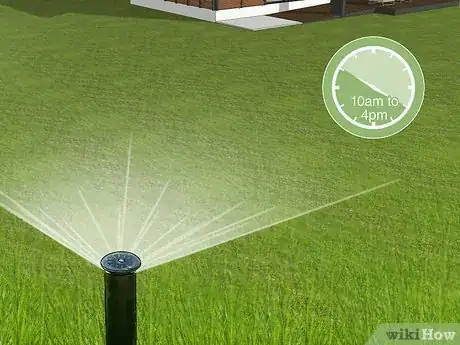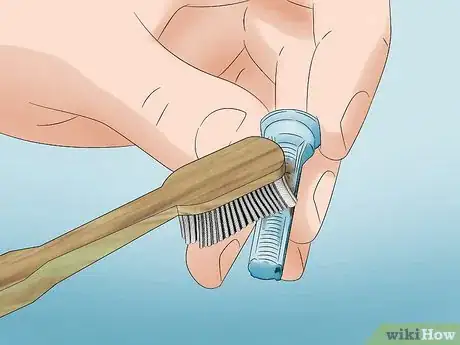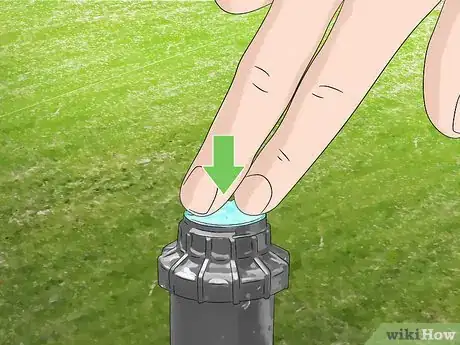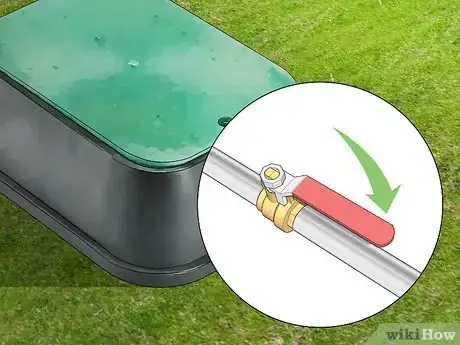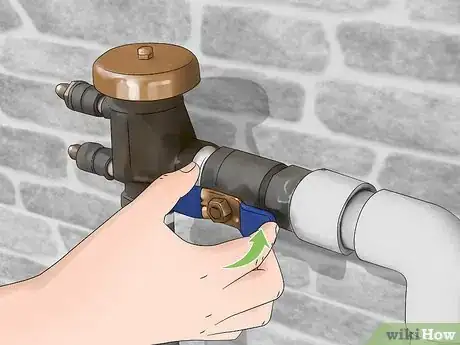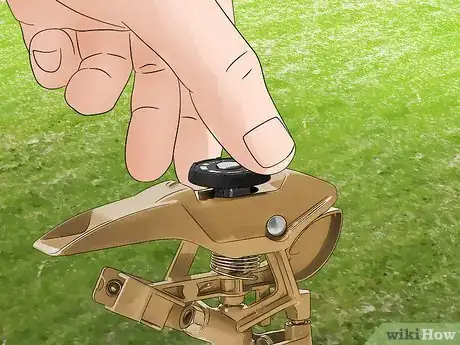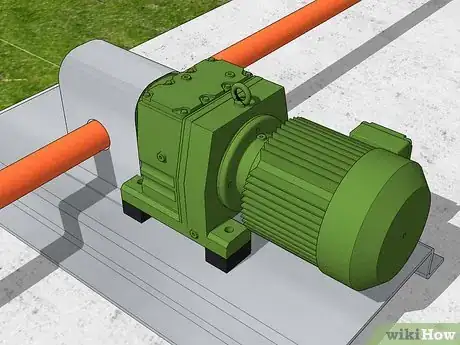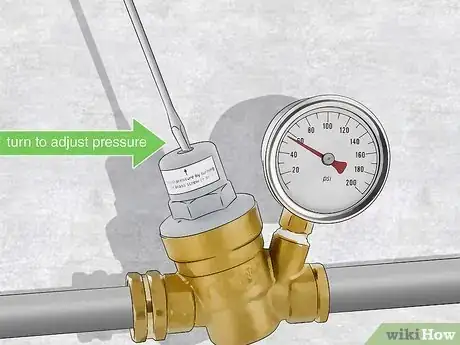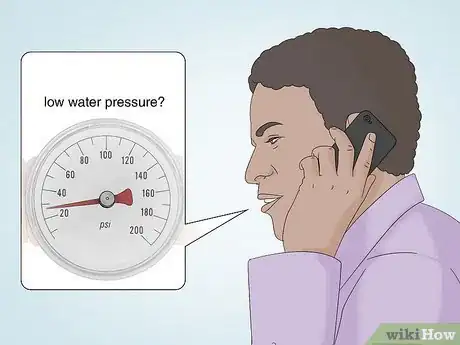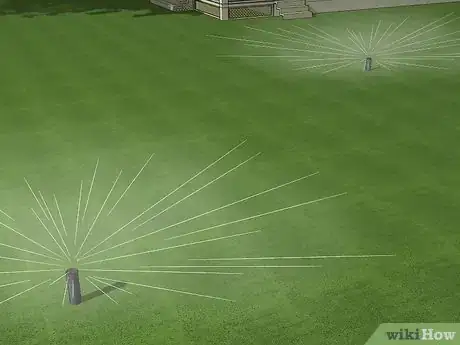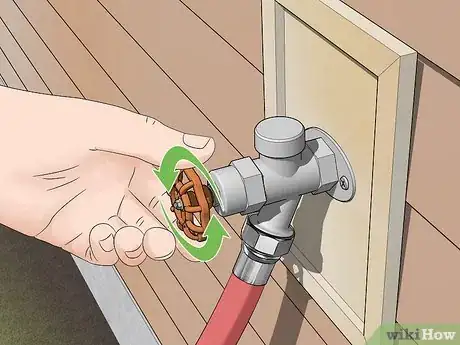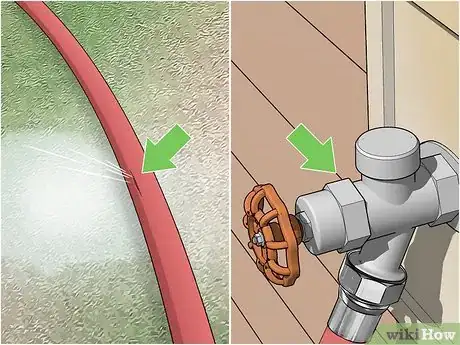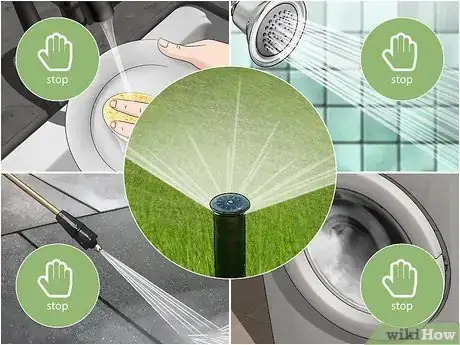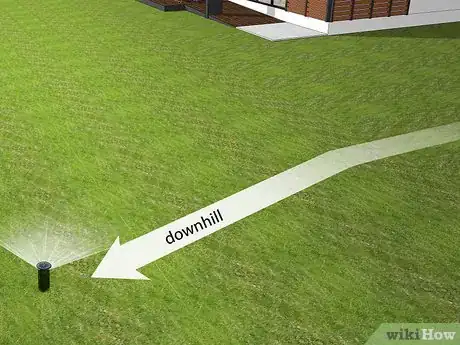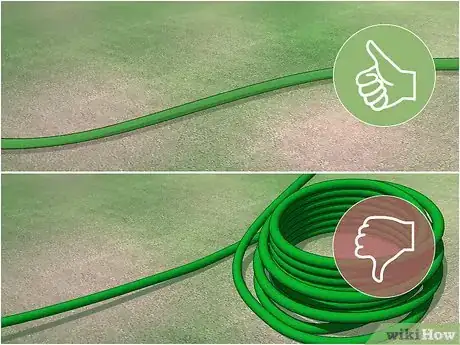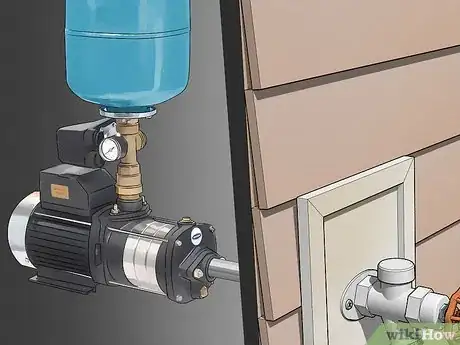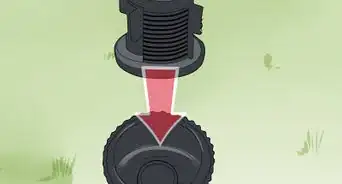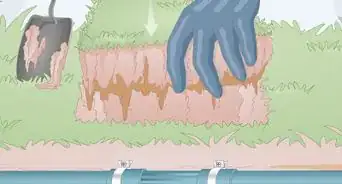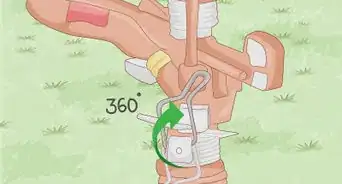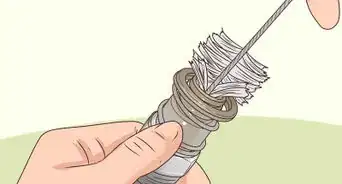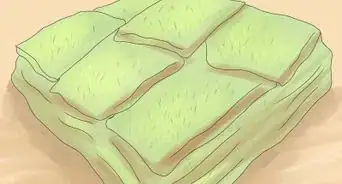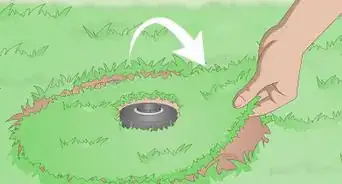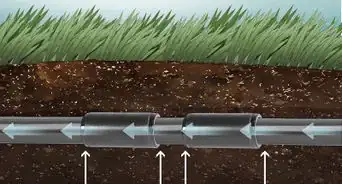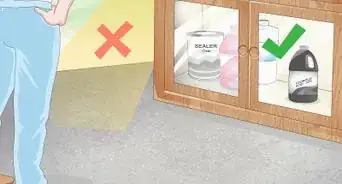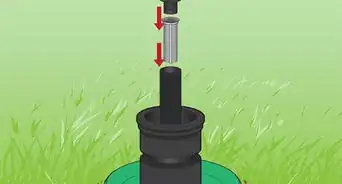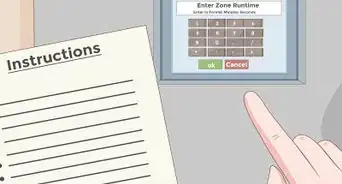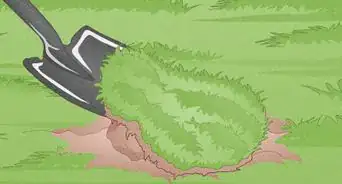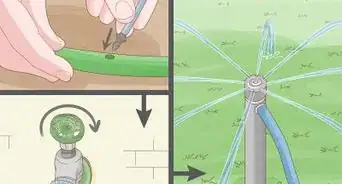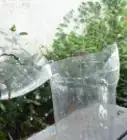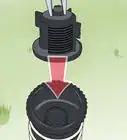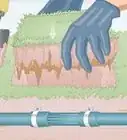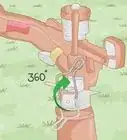This article was co-authored by Mike Garcia and by wikiHow staff writer, Eric McClure. Mike Garcia is a Licensed Landscape Contractor and the Founder of Enviroscape LA, a full-service landscape design and construction firm in Los Angeles, California. With over 30 years of experience, Mike specializes in sustainable landscape practices. Mike holds an Ornamental Horticulture degree, C-27 Landscape Contractor and D-49 Tree Service Contractor licenses, and Permaculture Design, California Naturalist, International Certified Professional Pond Contractor, and Pond Building certifications. He is one of eight Internationally Certified Pond Builders in the world. Enviroscape LA has won landscape and water feature awards from the International Professional Pond Contractors Association (IPPCA), National Association of Pond Professionals (NAPP), and the California Landscape Contractors Association (CLCA). Mike is a past president of the CLCA and currently serves on their local Board of Directors. Enviroscape LA has been featured in PONDS USA Magazine, Pond and Garden Lifestyles Magazine, and the Los Angeles Times. Mike has appeared on Extreme Home Makeover, HGTV's Landscapers Challenge, and A & E's series Fix That Yard.
There are 16 references cited in this article, which can be found at the bottom of the page.
This article has been viewed 38,597 times.
Fixing weak water pressure may feel like it’s going to be a headache, but it’s actually pretty easy so long as you can diagnose the problem. There are three potential sources of your issue here: the sprinkler, your home’s water supply, or the city’s water main. With a little investigation, you’ll have your answer in no time at all! We’ll walk you through everything you can do to increase your water pressure; from quick fixes and easy diagnostics to complex solutions for underground sprinkler systems, we’ve got your back!
Steps
Checking for Leaks and Assessing Pressure
-
1Identify leaks by checking the pressure in your home. First, check the water pressure wherever your water meter is located (it’s usually wherever the water main enters your home). There should be a built-in gauge. If it’s 40-60 psi, you’ve got normal water pressure in your home. Then, buy a pressure gauge and hook it up like a hose. Open the spigot all the way to get a reading.[1]
- Your water meter is usually in the basement if you have one. It may also be in a first-floor closet, boiler room, or even the backyard.
- If the psi readings on your home and spigot are way off from one another, you may have a leaky pipe somewhere in your home.
- If your home’s water pressure is well below 40, the problem is with your connection to your town’s water supply and you should contact them. There may be a busted water main somewhere nearby.
- Psi refers to pounds per square inch, and it’s the unit of measurement for water pressure.
-
2Increase your home’s water pressure if it’s a little low. If the water pressure in your home is just barely floating around the 40-45 psi mark, turn it up a little to see if that helps. Look for the pressure regulator where the water main comes out of the wall and into your home. This typically looks like a little bell-shaped mechanism on the pipe, next to the pressure gauge. Twist the little bolt on top counter-clockwise to turn the pressure up.[2]
- It’s normal for a building’s water pressure to fluctuate roughly 10 psi, so don’t worry if the needle on your pressure gauge goes up or down a bit.[3]
- If you have a dedicated water line for an in-ground sprinkler system (you have one if you pay two water bills usually), you have a separate pressure gauge for the sprinklers. Check that one instead.[4]
Advertisement -
3Try using your sprinklers during non-peak hours. If this is only an occasional problem, it may be the time you’re choosing to water your lawn. Depending on where you live, you may have thousands of neighbors hooked up to the same water main. If all of you use the water at the same time, the overall pressure will be lower. Try running your sprinklers at a time when folks are less likely to be showering or using their sprinkler systems.[5]
- The best times to use your sprinklers are from 10-4 pm when most folks are at work, or after 11 pm after everyone has gone to bed.
- People tend to use a lot of water in the morning, after work, and right before bed, so avoid 7-9 am, 5-6 pm, and 9-11 pm if possible.
Increasing Sprinkler System Pressure
-
1Clean individual sprinkler heads if their pressure seems off. Sprinkler heads in an in-ground system should spray water in a uniform pattern with even pressure. If one or two heads are off, clean the nozzle using a hose. You can also use a can of compressed air if you need to. If a blockage is stuck to the nozzle, use a clean, soft-bristled brush to remove the problem.[6]
- Don’t use any solvents or soaps.
- A pipe cleaner or soft-bristled toothbrush is perfect for cleaning a dirty sprinkler head.
-
2Press down on low-pressure sprinklers gently if they’re leaking at the stem. If a sprinkler head has low pressure and you notice there’s water leaking out near the top of the stem, the sprinkler head components are a little loose. Gently push or step down on top of the sprinkler head to reseat any loose valves or caps.[7]
-
3Make sure that your isolation valve is open all the way. The isolation valve regulates the flow of water for your system. To find it, look for a straight valve on the pipe where the water feeds off of your house and into the sprinkler system (it’s usually in a green box on the ground). The valve should be completely parallel to the pipe it’s on in order to open it all the way.[8]
-
4Open the backflow prevention valve if you can find it. Some sprinkler systems have a backflow prevention device that keeps water from flowing back in the direction it was coming from. If it’s partially closed, it may throttle your water pressure. Try opening your backflow prevention valve by twisting it counterclockwise as far as it will go to see if that helps.[9]
- There are a variety of different backflow prevention valve styles. Some of them are even underground. Usually, they’re a set of 2 pipes coming out of the ground, 12–18 inches (30–46 cm) off of the floor, just outside of wherever your water main feeds into your building.[10]
-
5Adjust the dial and deflector on impact sprinklers manually. Impact sprinklers are those pop-up sprinklers that shoot back and forth. If you have a system with these sprinklers, try manually adjusting the heads to increase pressure. Every brand of sprinkler is different, but there’s typically a pressure valve on the top that you can turn manually to increase the pressure. There’s also a deflection guard on the side of the head you can adjust to change the breadth of the water.[11]
- This is part of why impact sprinklers are so popular when it comes to sprinkler systems. They may cost a fair bit, but you can adjust them individually to suit your needs.
- If there isn’t a dial on top of the sprinkler, read the manual for your sprinkler system. There may be a nut you can turn with a small wrench.
-
6Install a boost pump on the water line if you don’t have one. A boost pump is a small component that sits somewhere on your water line to artificially increase the pressure. You will also need a pressure relief valve to throttle the water flow if the pressure gets too high.[12] Unfortunately, installing these pumps can be fairly complicated, so it’s best to contact a sprinkler installation company to put one of these on your system.[13]
- It should be obvious if you have one of these. On the outdoor control box or wherever your water main enters your home, there should be a large oblong-shaped fixture with pipes feeding into it. This is a boost pump.
- If you have a pump but the pressure suddenly feels like it has diminished, your pump may need to be replaced.[14]
-
7Adjust the pressure regulating dial on your control module. Wherever your system’s control box is located, look for a dial that lists the psi of your system (occasionally, these will be linked to individual sprinklers and there may be multiple dials). If the pressure is a little low, try turning this dial to increase the pressure manually.[15]
- For a fixed spray system, aim for 20-30 psi per sprinkler.
- On a rotor/pop-up system, shoot for 30-60 psi.
- Irrigation and drip systems require 20-40 psi.
-
8Contact your water supplier to see what’s going on. Reach out to your municipality’s water department and tell them about the low pressure you’re experiencing. They may send someone out to take a look at the main, or give you some feedback on what the issue may be. It’s possible that there’s an issue with the water main and that’s what causing your pressure issues.[16]
- Sprinkler systems either branch off of your home’s central water pipe, or have a totally separate connection from your home. In either case, if something is wrong with the water main, it will have a direct impact on your sprinkler’s water pressure.
-
9Reduce the number of sprinkler heads if all else fails. If your water pressure is universally low and it seems like nothing you change is improving the issue, cut back of the number of sprinkler heads. This should artificially improve the overall pressure of any sprinkler heads that you choose to leave open.[17]
- How you do this depends on the sprinkler system, so refer to your instruction manual to find out how you turn off individual sprinkler heads. Typically, there are valves you can shut off directly on the sprinkler head to keep it closed.
Increasing Pressure in Sprinklers that Connect to a Hose
-
1Make sure that the spigot is open all the way. This might seem obvious, but if you haven’t checked the spigot where your sprinkler is hooked up, check that first. Turn the spigot valve counterclockwise at least 4-5 times to ensure that you’ve opened the valve all the way. If the pressure kicks up, you probably just didn’t open the valve wide enough.[18]
-
2Inspect your hose and spigot to see if they’re damaged. If your hose or spigot are leaky, it won’t be reflected on the pressure gauge in your basement. If you’ve got a hose sprinkler, hook it up and turn it on. Take a look at the spigot, the connection, and the hose to see if it’s leaking anywhere. If you do have a leak, replacing the problematic component should solve this.[19]
- Replacing a spigot can be kind of tricky if you don’t have soldering tools and a pipe cutter. You’re best off hiring a plumber or pipefitter for this one.
-
3Minimize how much water you use when running a sprinkler. If you tend to water your plants when you’re accomplishing other tasks, like washing your car, doing the laundry, and running the dishwasher, stop! You have a limited amount of water to work with, and the more water you use simultaneously, the more likely it will be that the sprinkler gets left behind.[20]
-
4Re-position your sprinkler so the hose runs slightly downhill. It’s harder to push water uphill, so use gravity to your advantage. If your yard isn’t perfectly level, run your hose so that it gradually leads on a downward slope to wherever you want to run your sprinkler. This should give you a little bit of a bump in pressure, and it may solve your pressure issues entirely.[21]
- Make sure that you don’t have any kinks in your hose as well! A kinked hose will dramatically decrease your water pressure.
-
5Use the shortest hose necessary to water your yard. The longer your hose is, the farther the water has to travel to get to your sprinkler. This can cause your sprinkler pressure to appear deceptively low. If you’ve got a big 50–100 ft (15–30 m) hose coiled up outside but you only need 25 feet (7.6 m) in length, get a newer, shorter hose and use that instead.[22]
- A wider hose will give you a better flow rate as well, but that would involve replacing the spigot that connects to your house, which can be pretty tricky.
-
6Hook up a sprinkler booster pump for your hose. A sprinkler pump will run you $50-300, but they’ll fix this problem 100%. All you do is hook your hose up to the pump, and then hook another hose up that runs from the pump to the sprinkler. Plug the pump in and turn the water on. The pump will artificially force water out of your weak water line at a much higher psi.[23]
- If you try multiple solutions and you simply come to the conclusion that your city’s water pressure is kind of weak, this is the ideal solution.
References
- ↑ https://www.popularmechanics.com/home/how-to/a1053/4202333/
- ↑ https://www.popularmechanics.com/home/how-to/a1053/4202333/
- ↑ https://www.sandiego.gov/public-utilities/customer-service/your-home-plumbing/pressure
- ↑ https://charlottenc.gov/Water/Development/Pages/IrrigationMeterInstallation.aspx
- ↑ https://www.portland.gov/water/report-water-quality-issues/water-pressure-and-flow
- ↑ https://www.rainbird.com/sites/default/files/media/documents/2018-05/IrrigationTroubleshootingGuide.pdf
- ↑ https://www.rainbird.com/sites/default/files/media/documents/2018-05/IrrigationTroubleshootingGuide.pdf
- ↑ https://extension.okstate.edu/fact-sheets/managing-pressure-in-the-home-irrigation-system.html
- ↑ https://extension.colostate.edu/topic-areas/yard-garden/home-sprinkler-systems-backflow-prevention-devices-4-714/
- ↑ https://englewoodwater.com/backflow-frequently-asked-questions/
- ↑ https://youtu.be/_0kT0xfUiic?t=21
- ↑ https://sam.extension.colostate.edu/wp-content/uploads/sites/2/2017/04/sam-irr-guide.pdf
- ↑ https://www.ag.ndsu.edu/publications/crops/irrigation-water-pumps
- ↑ https://sam.extension.colostate.edu/wp-content/uploads/sites/2/2017/04/sam-irr-guide.pdf
- ↑ https://www.bendoregon.gov/government/departments/utilities/conservation/waterwise-irrigation/diy-irrigation-sprinkler-tips/sprinkler-performance
- ↑ https://charlottenc.gov/Water/Development/Pages/IrrigationMeterInstallation.aspx
- ↑ https://extension.okstate.edu/fact-sheets/managing-pressure-in-the-home-irrigation-system.html
- ↑ https://extension.okstate.edu/fact-sheets/managing-pressure-in-the-home-irrigation-system.html
- ↑ https://www.portland.gov/water/report-water-quality-issues/water-pressure-and-flow
- ↑ https://www.sunshineplumbingheating.com/blog/2017/july/low-water-pressure-this-may-be-the-culprit/
- ↑ https://www.buncombemastergardener.org/gardening-slopes-irrigation/
- ↑ https://www.swanhose.com/garden-hose-flow-rate-s/1952.htm
- ↑ https://www.bobvila.com/articles/best-sprinkler-pump/
